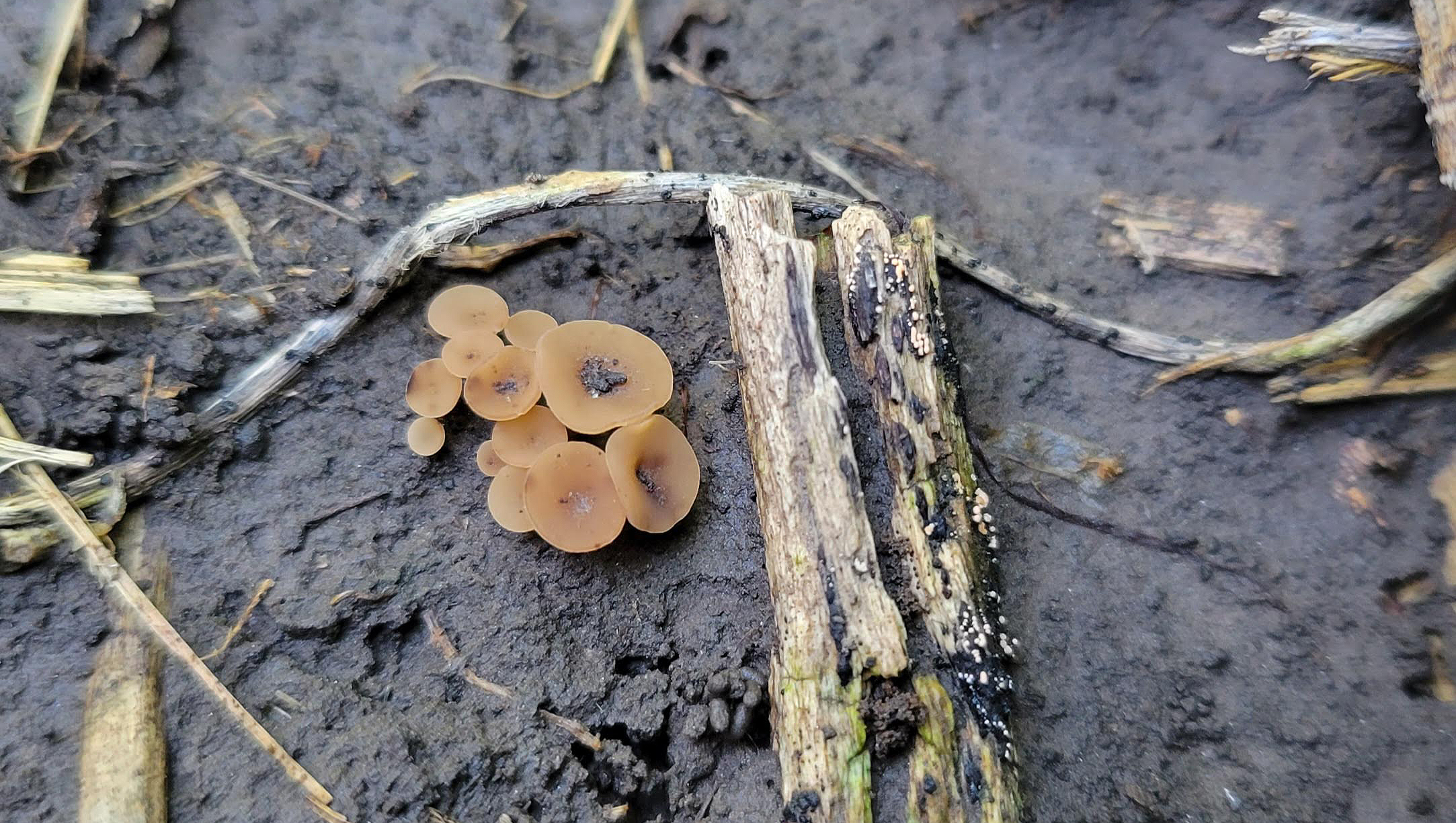By Loren J. Giesler, Extension Plant Pathologist
Pathogen
Charcoal rot, also known as dry-weather wilt, is caused by the soilborne fungus Macrophomina phaseolina. The fungus has a widespread distribution and large host range and affects corn and sorghum.
Microsclerotia (hardened fungal survival bodies) are formed inside infected tissue. These microsclerotia are how the fungus overwinters in infested crop debris and free in soil. Survival of microsclerotia is several years in dry soil but only a few weeks in wet, saturated soils.
Infection of soybean typically occurs early in season at emergence and early seedling growth stages. These seedling infections remain latent until environmental stresses (drought and high ambient temperatures) occur during the R1 (flowering) to R7 (mature pod) growth stages.
Disease Symptoms
Seedling damage can occur when infected seed is planted, but this has not been observed in Nebraska. Typically, symptoms occur after midseason during the reproductive stages of crop development. Infected plants produce slightly smaller leaflets than healthy plants and have reduced vigor. As the disease advances, leaflets yellow, then wilt and turn brown. The brown leaves remain attached to the petioles (leaf stems).
A light gray of silver discoloration will be visible in the taproot and lower stem when plants are split open. Black specks (microsclerotia) will be visible in this tissue of the stem and tap root. Outer tissues will have black, dusty microsclerotia.
Plants in the driest parts of the field will typically show symptoms first. Upper pods may have poor fill and general low plant vigor. In some cases, the upper one-third of the plant may have only flat pods without seed.
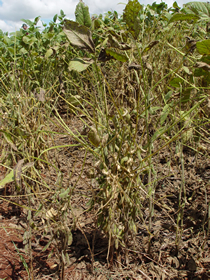
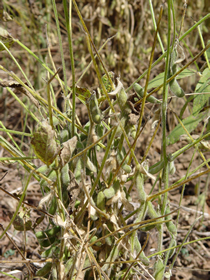
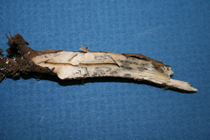
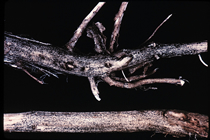
Favorable Environmental Conditions
Charcoal rot thrives in the hottest, driest part of the growing season. This disease is most prevalent in southern states, but it can develop any place where hot, dry conditions exist. Charcoal rot develops when there is a high level of the pathogen in the soil and when plants are under stress from hot dry weather.
Management
Genetic Resistance
Shorter-season varieties reduce the time for dry conditions during grain fill. Placement of one of these varieties, in fields with a history of charcoal rot, may help the infected plant to escape harsh conditions.
Cultural Practices
Plants grown in conditions of high temperatures, drought or poor fertility (too high or too low) are most susceptible. Any cultural practices that minimize plant stress will reduce the risk of charcoal rot. Reduce plant populations and optimize fertility levels, especially phosphorus. Good fertility won't control charcoal rot but it can reduce disease impact on yield.
In fields with a history of charcoal rot, rotate out of soybeans for two years or more to reduce inoculum. Small grains and corn can be planted during the two-year interval between soybeans. Corn is a host for the pathogen but generally supports lower populations of microsclerotia in soil than does soybean. Microsclerotia can survive for an indefinite time in soil. The benefit of rotation will vary with the field.
Chemical/Biological Control
Seed treatment fungicides have not been shown to help manage this disease.
Additional Resources
Crop Protection Network — https://cropprotectionnetwork.org/encyclopedia/charcoal-rot-of-soybean
Soybean Research & Information Network — https://soybeanresearchinfo.com/soybean-disease/charcoal-rot/
Information for this page was originally produced by Loren Giesler and updated by Dylan Mangel.
Soybean Diseases
- Soybean Diseases (Home)
- Anthracnose
- Bacterial Blight
- Bacterial Pustule
- Bean Pod Mottle Virus
- Brown Spot
- Brown Stem Rot
- Charcoal Rot
- Frogeye Leaf Spot
- Phytophthora Root and Stem Rot
- Pod and Stem Blight
- Purple Seed Stain
- Rhizoctonia Root Rot
- Sclerotinia Stem Rot
- Soybean Cyst Nematode (SCN)
- Soybean Mosaic Virus
- Soybean Rust
- Stem Canker
- Sudden Death Syndrome (SDS)
